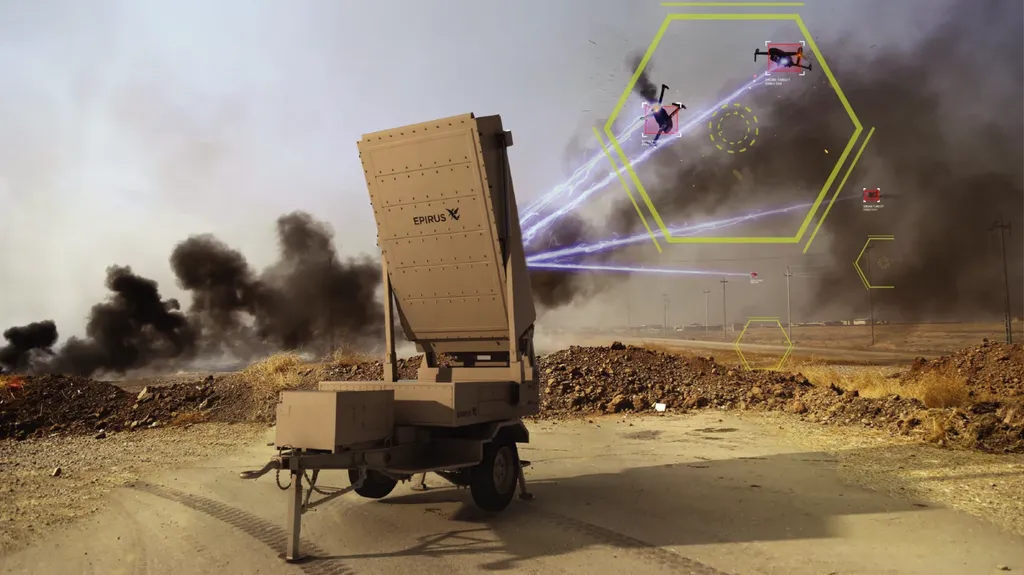At Camp Atterbury in Indiana, U.S. military officials and international partners witnessed a groundbreaking demonstration of a high-powered microwave (HPM) weapon known as Leonidas. Developed by California-based defence contractor Epirus, the system successfully neutralised a swarm of 49 drones in a single, invisible strike. This event marks a potential turning point in counter-drone warfare, showcasing a technology that could redefine modern air defence strategies.
The demonstration was striking in its subtlety. Unlike traditional weapons that rely on missiles or explosions, Leonidas disabled the drones with bursts of electromagnetic energy. The drones simply fell from the sky, their electronics overloaded by the pulse. “I call this a singularity event,” said Epirus CEO Andy Lowery, highlighting the transformative nature of the technology.
Microwave weapons offer a distinct advantage over conventional counter-drone systems. Unlike lasers, which focus on one target at a time and require sustained accuracy, HPM systems can disable multiple threats simultaneously. They operate silently, without the need for ammunition or kinetic projectiles, making them a cost-effective and scalable solution for modern battlefields.
Leonidas is the centrepiece of the U.S. Army’s Indirect Fire Protection Capability-High Power Microwave (IFPC-HPM) programme. Under a $66 million contract, Epirus has already delivered four prototypes. Each system resembles a mobile radar unit mounted on a vehicle platform, equipped with gallium nitride technology to generate powerful, finely tunable pulses. Operators can control the beam through software, adjusting its intensity and spread to handle both small formations and large swarms.
The test at Camp Atterbury represents one of the most significant real-world demonstrations of HPM technology to date. As conflicts around the world increasingly involve swarms of inexpensive drones, the need for effective countermeasures has become urgent. The rapid rise of unmanned aerial vehicles in Ukraine, the Middle East, and other conflict zones has accelerated interest in directed-energy defences. While the U.S. Army has long experimented with lasers and kinetic interceptors, Leonidas offers a new paradigm—one that could change the way militaries approach air defence.
For now, Leonidas remains in the testing phase, but its potential is undeniable. A battlefield system that can disable swarms of drones without ammunition, smoke, or explosions presents a compelling alternative to traditional air defence systems. It also raises important questions about countermeasures, escalation, and cost-effectiveness. As the technology matures, it could become a cornerstone of modern military strategy, reshaping the way nations defend against emerging threats.
The demonstration at Camp Atterbury is not just a technological milestone; it is a testament to the evolving nature of warfare. As drones become more prevalent and sophisticated, the need for innovative defence systems will only grow. Leonidas represents a step forward in that direction, offering a glimpse into the future of counter-drone warfare and the broader implications for global security.

